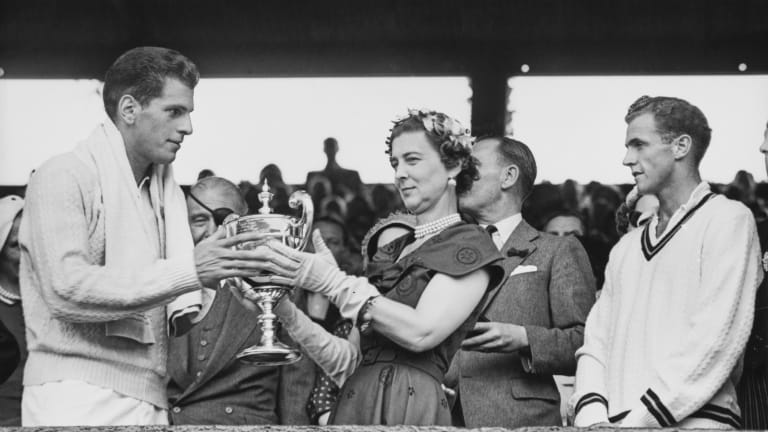Later in 1951, there came a controversial moment. As champion of Australia and Wimbledon, Savitt appeared the likely lead player on America’s Davis Cup team. And though he played in two of the preliminary rounds leading up to the finals—then called the “Challenge Round”—Savitt was left off the team for the last stage of the competition versus the mighty Australians.
Over the years, a number of theories for this have surfaced, including the desire of an ostensibly retired American, Ted Schroeder, to play; to various political machinations between Davis Cup captain Frank Shields and the team’s advisor, Jack Kramer; even to rumblings of anti-Semitism. While no one has ever learned the true answer as to why Savitt was benched, what is known was that a rusty Schroeder lost two of his three live rubbers. Savitt always refused to cite anti-Semitism for his exclusion.
Nonetheless, by the end of the next year, 1952, Savitt opted to stop playing tennis full-time.
“I wanted to make a living,” he said. “I didn’t want to become a traveling pro tennis player, nor did I want to be a teaching pro. So instead, I went into business.”
In Savitt’s case, that meant a return to Texas, where he worked for several years in the oil industry before relocating to New York City and entering the world of finance.
But even during that period, Savitt continued to intermittently dip his toes back into tennis—and these were hardly lightweight forays. One significant Savitt statement came in 1956. Having gone four years without playing a major, Savitt entered the U.S. Nationals and reached the quarterfinals. There, he took on the second-best player in the world, the great Australian Ken Rosewall. Trailing two sets to love and 3-4, love-40, Savitt launched an incredible comeback, winning the next two sets with a series of incredible shots from all corners of the court.
Though a weary Savitt had nothing left for the fifth, losing it 6-1, he’d clearly shown all the genius that had made him a champion. Writing in the New York Times, Hall of Fame writer Allison Danzig described the match as, “a display of racket virtuosity that approached the sublime.”

